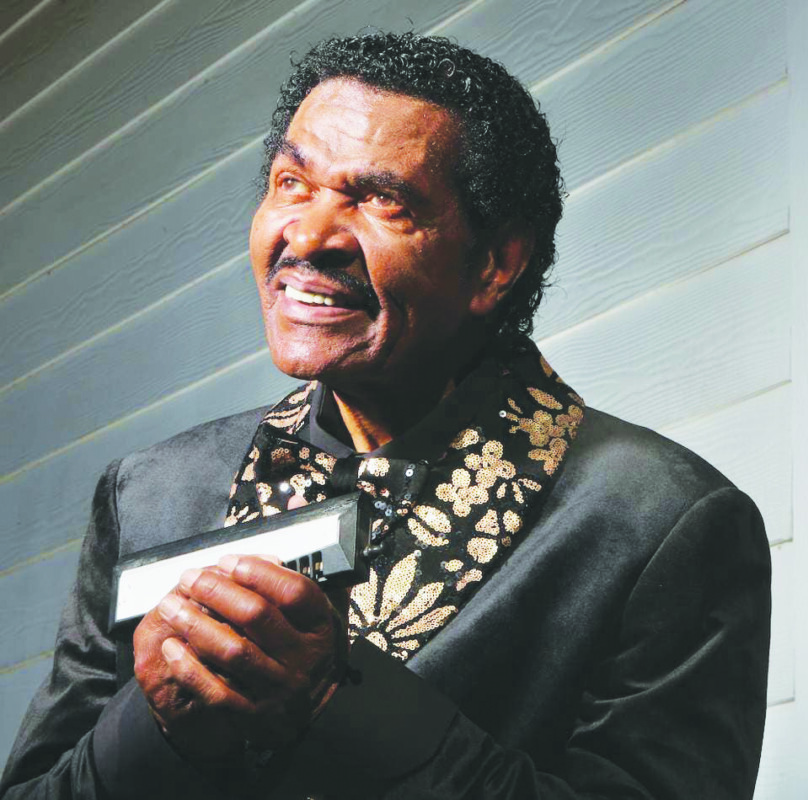Fetch becomes retro cool in Mean Girls, a Tina Fey-penned feature film musical adaptation of the stage musical comedy based on the 2004 movie (also by Fey) based loosely on the nonfiction book Queen Bees and Wannabees by Rosalind Wiseman.
Once again, Cady Heron (Angourie Rice) has spent her life living in Africa and being homeschooled by her mother and now, in her junior year, arrives at an American high school. She finds the cliques and social rules and boys — particularly Aaron Samuels (Christopher Briney), who sits in front of her in math class — overwhelming. Luckily, she meets Janis ‘Imi’ke (Auli’i Cravalho) and Damian Hubbard (Jaquel Spivey), two “art freaks” as they’re later labeled, who check on her when she takes her lunch to the bathroom. Genuinely kind, Janis and Damian try to warn Cady about the Plastics — Regina George (Reneé Rapp) and her two followers, Gretchen Wieners (Bebe Woods) and Karen Shetty (Avantika). This trio of girls dominates the school’s social structure with queen bee Regina inspiring awe and fear in her fellow students. (Plus, she and Janis have an old beef.) But when Cady is invited to sit with these popular girls, Janis and Damian encourage her to do it so they can get a window into the world of the Plastics. Cady, trusting and unaware of what she’s getting into, goes along with the plan and gets sucked into the Plastics’ world. When Regina actively tanks Cady’s chances at dating Aaron, Cady decides to wholeheartedly participate in Janis’ plan to arrange for Regina’s downfall.
Returning as math teacher Ms. Norbury is Tina Fey, with Tim Meadows returning as Principal Duvall. Other grown-ups: Busy Philipps is Regina’s “cool mom” mom and Jon Hamm plays the coach.
There are moments of fun in this adaptation, many of them involving Cravalho’s Janis or Spivey’s Damian, and moments when those little Tina Fey sparkles of strategic weirdness hit their mark. But overall I got a real “flat soda” feel from this movie. The spikey bits of the original feel ironed out and replaced by earnestness that somehow made it feel darker and less specific. Instead of the “evil takes a human form in Regina George”-style exaggeration, we get Gretchen Wieners singing about how she feels deeply unloved and unlovable. I’m not sure if the act of having song replace Cady’s narration is what seems to throw a wet blanket of sincerity over things or if it is the result of replacing the elder millennial/Gen X sensibilities with Gen Z ones. I do think there are elements of the story that don’t quite fit because an earlier generation’s high school experience is being shoved into the present. TikTok, for example, is sort of wedged into the movie but it feels more like an excuse for jokey montage than some expression of how life is for Today’s Youth.
The 2004 Mean Girls was a broad, commercial comedy, sure, but it also had some insightful observations about girl world. Mean Girls 2024 feels more like high-quality IP. B-
Rated PG-13 for sexual material, strong language and teen drinking, according to the MPA on filmratings.com. Directed by Samantha Jayne and Arturo Perez Jr. with a screenplay by Tina Fey, Mean Girls is an hour and 52 minutes long and distributed in theaters by Paramount Pictures.
Wonka (PG)
Timothée Chalamet is surprisingly charming in the surprisingly fun Wonka.
I’ve been “ugh, really?” with the best of them since I started seeing Wonka trailers. But Chalamet captures the personality of the eccentric chocolate maker we know from the 1971 Gene Wilder movie and gives him a youthful cast that is believable and not creepy or off-putting (cough, Johnny Depp, cough). There is genuine wonder and delight in this musical — none of which is what I expected from early images of this project or even after reading the “this movie is … good?”-type review headlines.
Willy Wonka (Chalamet) is just a guy with fluffy hair, some fun luggage and big dreams when he arrives in, er, Town where the speech patterns are London, the royalty is Bavarian and the big power is held by the chocolate cartel of Mr. Slugworth (Paterson Joseph), Prodnose (Matt Lucas) and Fickelgruber (Mathew Baynton). They use their exclusive high-end chocolates to bribe the police chief (Keegan-Michael Key) into doing their dirty work, like shooing away itinerant chocolatiers. Wonka is a particular threat to the cartel because his chocolates are very good, perhaps the best anybody has ever had, and affordable to all. Plus some of them briefly confer weightlessness, so they’re real crowd-pleasers.
After the police chase him out of the town square and take his chocolate proceeds, Wonka doesn’t have enough money to pay Mrs. Scrubitt (Olivia Colman, absolutely relishing this very Roald Dahl-esque kind of villain) for the room he leased from her. Or rather, he has enough for the room but not all of the extras he didn’t realize he’s on the hook for because he didn’t read the fine print of the lease. Soon he learns that he’s basically an indentured servant to Scrubitt and must work in her laundry with other trapped lease-signers (played by the likes of Jim Carter, Natasha Rothwell, Rich Fulcher and Rakhee Thakrar) and tween-aged orphan Noodle (Calah Lane), whom Scrubitt took in as an infant and who now owes Scrubitt for all that “kindness.” Because Noodle goes into town with the laundry, Wonka strikes up a deal with her wherein she smuggles him out during the days so he can sell his chocolate and he helps her pay down her debt to Scrubitt. With the help of the rest of the laundry gang — who are enjoying some down time thanks to a Wonka invention of a dog-powered scrubbing machine — Wonka is able to sneak through the town staying ahead of police, especially the increasingly out-of-shape chief whose recent payment from the cartel was so much chocolate that he is gaining pounds by the hour.
Meanwhile, cutting into Wonka’s chocolate supply is a small, green-haired orange man who Wonka claims to Noodle has been following him for years and who sometimes breaks into his room at night to steal his chocolates. Even after Wonka catches the man, who explains he is an Oompa Loompa named Lofty (Hugh Grant), Noodle isn’t quite sure she believes Wonka isn’t just eating the candies in his sleep.
Rowan Atkinson shows up as a chocolate-addicted cleric, a giraffe figures into the plot and Wonka half expects success at selling chocolate will lead his late mother (Sally Hawkins) to appear to him. And, shockingly, all of this comes together and works as something that feels if not exactly like a Roald Dahl creation, very close to it, very sweet-bitter-sweet in that Matilda kind of way, but perhaps with a less bleak world view. Noodle tells Wonka that the “greedy beat the needy” in a very Dahl-like recognition that the world isn’t fair, but there’s lots of credence given to good-hearted dreams and helping one another too.
Wonka also makes a good argument for seeing a movie in a theater — its big colors and storybook town are charming and particularly cinematic. The color of the Wonka candy factory here spreads out to every interesting element of the world, from the bright pink uniforms Wonka’s staff wears on their brief foray into running a shop to the fantastical hair colors created by tainted chocolate.
Wonka is a warm-hearted movie that actually delivers on the “world of pure imagination” promise. B+
Rated PG for some violence, mild language and thematic elements, according to the MPA on filmratings.com. Directed by Paul King with a screenplay by Simon Farnaby & Paul King, Wonka is an hour and 56 minutes long and distributed in theaters by Warner Bros.
Poor Things (R)
Emma Stone plays a kind of baby-brained Frankenstein’s monster in the steampunk horror comedy Poor Things.
Bella Baxter (Stone) is basically a toddler in a woman’s body when we first meet her, sitting in a high chair and clapping at the loud burps of Dr. Godwin Baxter (Willem Dafoe), the man who acts as her surrogate father. Baxter is a Victorian-era-esque surgeon, enthralled with anatomy (and disfigured by his own father, who passed off his torture as science), who has successfully, based on the creatures wandering his house, sewn goose heads on dogs and vice versa, with living results. Bella, we learn, is the result of an experiment by which the brain of an infant was placed in the body of its mother after the pregnant woman jumped off a bridge. A few “it’s alive!”-style jolts of electricity and Bella — not quite an adult, not quite a baby — opens her eyes.
Quickly Bella begins to talk, to reason to some degree and to ask questions of “God,” as she calls Dr. Baxter, and of Max McCandles (Ramy Youssef), an assistant he brings in to document her mental growth. Eventually Baxter feels her maturity has progressed enough that he suggests that Bella and Max get married, though he intends for them to basically live with him, never leaving his London house, forever even though Bella is of a more adventurous, see-the-world mindset.
Then Duncan Wedderburn (Mark Ruffalo), a lawyer Baxter calls in to read the marriage contract, seduces Bella into running away. Or maybe she just decides to run away and have an adventure before returning to marry Max. They travel first to Lisbon and then on a ship to Greece. Duncan is in it entirely for the passion, which Bella also enjoys, but Bella also wants to learn about the world. Thus when they’re detoured, penniless, to Paris and she’s offered a job by the madame (Kathryn Hunter) of a brothel, Duncan is horrified but Bella just sees it as an opportunity for study.
Ever seen the TV show Bones? As Bella goes from child-brain to adult brain or something, she starts to play like a kind of Temperance Brennan, Emily Deschanel’s scientist Bones of Bones. “What is this ‘emotion’ of which you speak?” is the vibe — though not always because Bella also becomes sort of enamored of philosophy and socialism and heartbroken by the horrors of poverty. She loves anatomy and discussions of Emerson but she doesn’t understand Duncan’s emotional whininess — not his ego about his romantic prowess nor his supposed great love for her nor his “heartbreak” (or bruised pride) at her brothel work. It’s — I don’t know, weird? Unsettling? Infantilizing in a way that makes all the sex cringey? All of those things? Throughout this movie’s two hour and 21 minute run time, I maybe did a “ha” once or twice or thought “neat visual” or “Stone’s doing an interesting thing” but I was never entirely certain how I felt about what I was watching. (Stone’s performance in particular both has its moments and feels like you’re watching a prolonged exercise in an acting class.) I wasn’t bored but also not delighted or all that amused or “hmm, this makes me think.” And though the movie presents everything as kind of a dry comedy lark, scratch half a millimeter into what is being said or done and the movie really does feel like a kind of horror movie, a horror movie where one of the horrors seems to be the movie periodically telling you it’s doing feminism and you’re welcome. (No thank you.)
This movie feels like a bunch of ideas and visuals sort of mushed together in the hope that they’ll congeal into something living and breathing but ultimately missing that jolt of energy that would make it a world I was fully invested in. C-
Rated R for strong and pervasive sexual content, graphic nudity, disturbing material, gore and language, according to the MPA on filmratings.com. Directed by Yorgos Lanthimos with a screenplay by Tony McNamara (from a book by Alasdair Gray), Poor Things is two hours and 21 minutes long and distributed in theaters by Searchlight Pictures.
Featured photo: Mean Girls.






